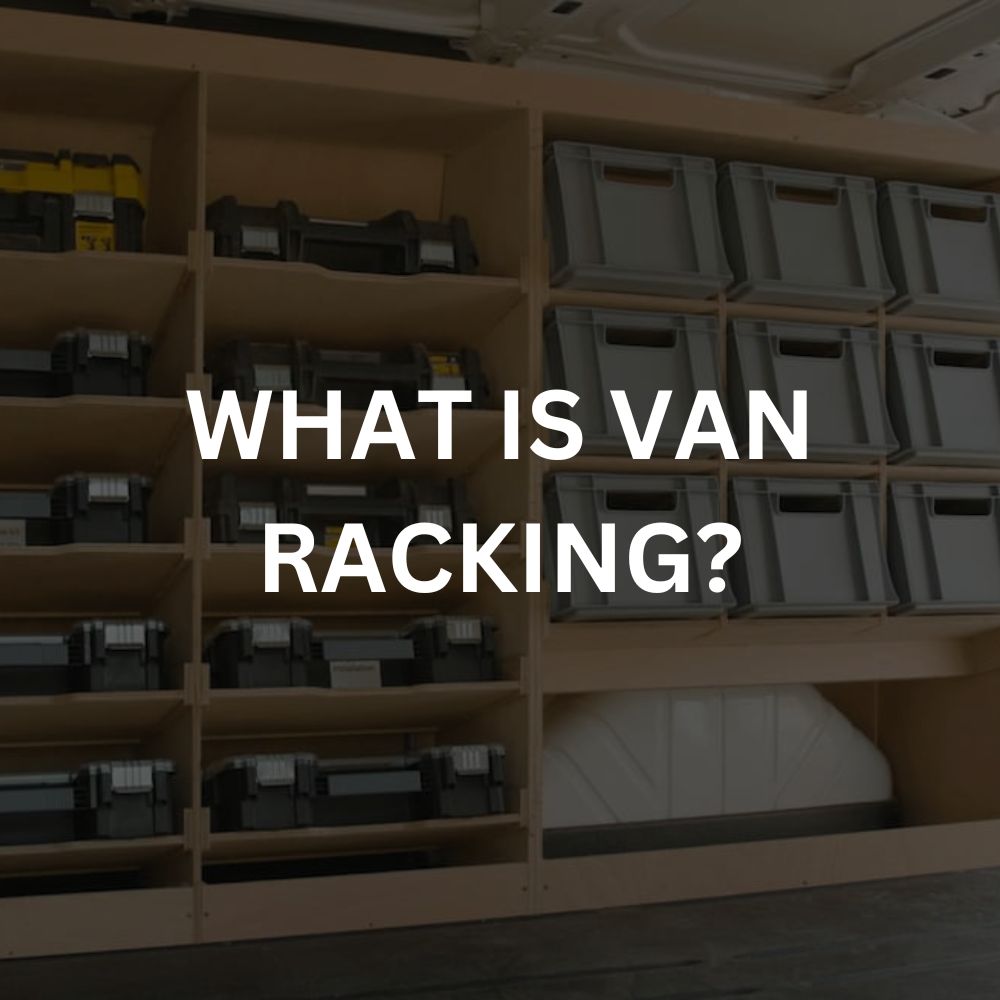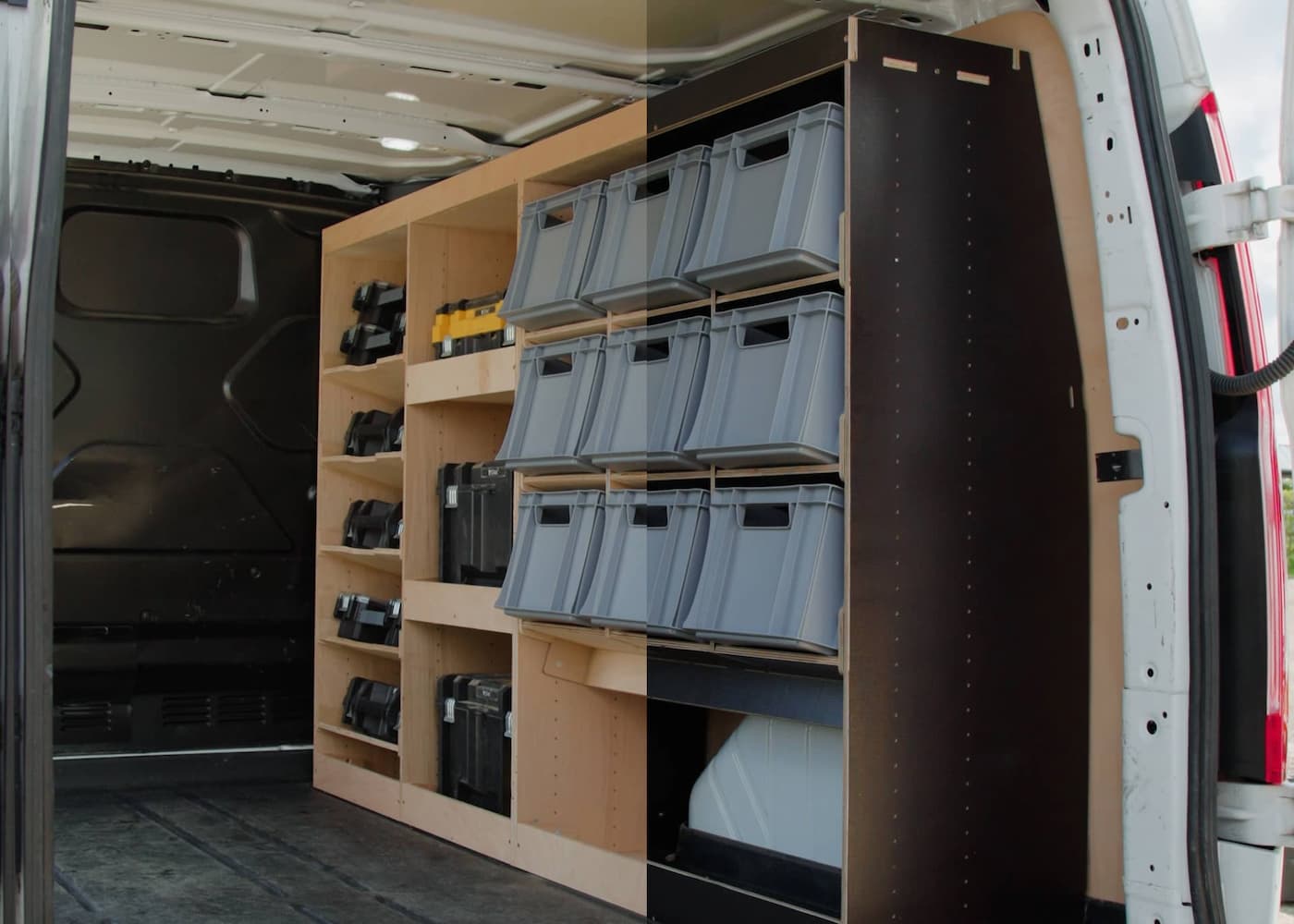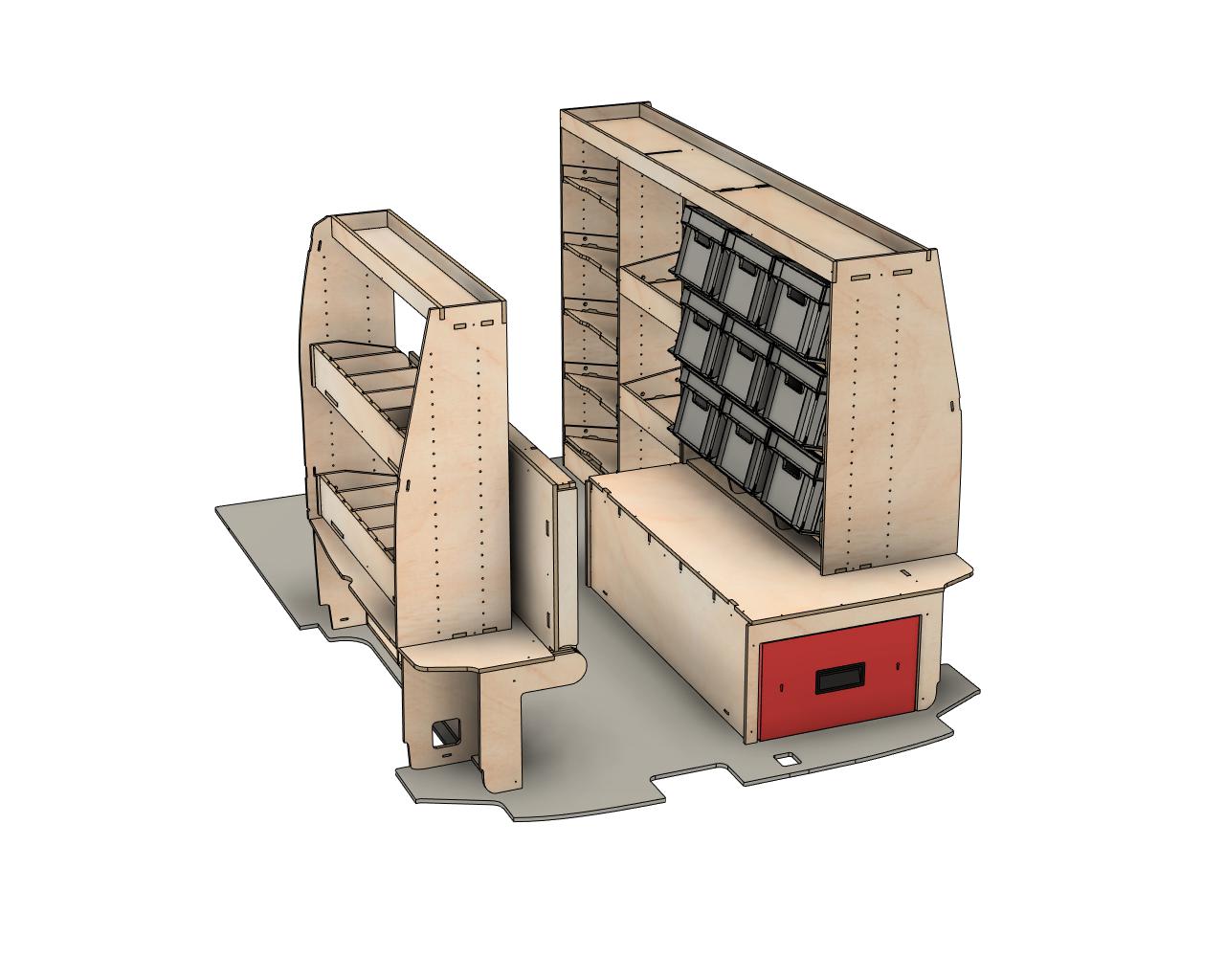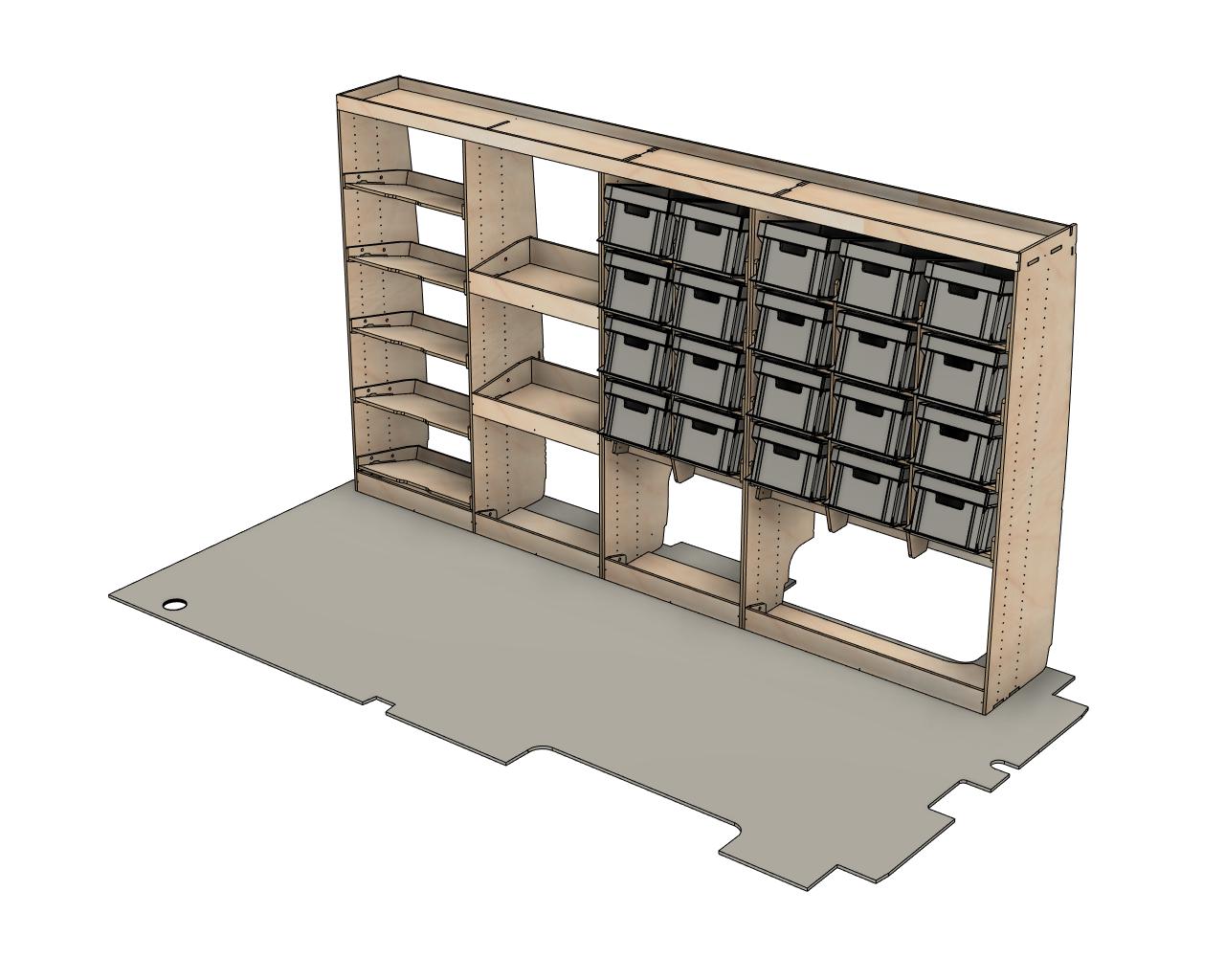
Do you lack storage in your van? A great racking system can help make you more efficient.
So, what is van racking? Read on to learn how it can benefit your trade & understand exactly what it is.
Have you ever considered how much more efficient your work as a tradesperson could be if your van were better organised?
Van racking might be the answer you’re looking for. It’s not just about shelves, but a tailored system to maximise your van’s storage capacity and keep your tools and equipment secure.
Let’s explore this a bit more; you’ll see why it’s a must-have for every professional on wheels.
What is Van Racking?

So, what is van racking, and how can it benefit your business?
Van racking is a system of shelving units that maximises your van’s storage capacity. It transforms your vehicle into a mobile workplace or storage unit.
Every trade has its tools. Whether you’re a plumber, an electrician, or a carpenter, you’ve got a plethora of equipment that you need to transport from job to job.
It’s not just about having a van to transport your tools; it’s about having a place for everything and everything in its place. That’s where van racking comes into play.
Van racking allows you to safely store and organise all your tools, equipment, and supplies. It includes drawer units for small items, racking units for larger tools, and secure, lockable storage for valuable equipment.
Plus, it’s all customisable. You can choose from a range of plywood internal racking and shelving solutions tailored to your van’s dimensions and your business needs.
Benefits of Van Racking

When you invest in van racking, you’re not just buying shelves; you’re optimising your workspace, increasing efficiency, and safeguarding your valuable tools. This system provides a place for every item, minimising your time searching for tools and increasing your productivity.
A well-organised van reduces the risk of losing or misplacing your tools. It’s like having your own mobile workshop—everything is exactly where it should be. This saves you time and minimises the frustration of rummaging through a cluttered van.
Another benefit of van racking is the protection it offers. By securely storing your tools, you can drive with peace of mind, knowing they won’t be damaged while in transit. This could save you significant costs in tool replacements in the long run.
Lastly, a neat and professional-looking van reflects positively on your business. It gives the impression that you’re organised and efficient, which could attract more clients.
Essential Van Racking Tools

To effectively organise your van, there are several essential tools you’ll need for your racking system. High on your list should be durable racking units. These are the backbone of your system, providing the structure where you’ll arrange your tools and equipment.
Draw units are another must-have. They offer secure and easily accessible storage for smaller items. Lockable storage units provide an extra layer of security for valuable tools, keeping them safe while you’re on the move or parked.
Ply boarding is vital for protecting the interior of your van. Lining the inside of your vehicle will prevent damage from shifting tools and equipment. Plus, it provides a clean, professional look.
Also, consider investing in tailored racking solutions. These are designed to fit the specific dimensions of different van models, ensuring you make the most of every inch of space.
Customising Your Van Racking
Start with a clear idea of what you want. Consider the tools you use regularly and design the layout accordingly. Do you need multiple small compartments for screws and nails? Perhaps a large drawer for power tools? It’s your van; make it work for you.
Don’t forget to utilise every inch. Often, the space above the wheel arches is overlooked, but with clever shelving, it can be a valuable storage area. Likewise, the roof can be fitted with racks for ladders or long tools.
Think about your workflow, too. Arrange your tools in the order you use them to speed up your work process.
Van Racking for Different Trades
Depending on your trade, your van racking needs can greatly vary. Van racking for plumbers will comprise compartments for organising your pipes, wrenches, and other tools. You might also require spaces for your plumbing fittings, sealants, and soldering equipment.
An electrician van racking, on the other hand, could feature secure holders for your electrical wires, outlets, and switches. You’d appreciate a setup that fits your circuit testers, wire strippers, and other specialised tools, not to mention a safe place for your electrical tape and connectors.
Carpenters might look for racking with room for saws, hammers, and nails, as well as space for wood pieces of varying sizes.
Landscapers could require racking that accommodates gardening tools, seeds, and fertilisers.
Meanwhile, painters might need a setup that can safely hold paint cans, brushes, and drop cloths.
In essence, van racking should be customised to your specific trade, helping you be more organised and efficient. Remember, there’s no one-size-fits-all solution when it comes to van racking. It’s all about finding what works best for you and your trade.
Tips for Maintaining Your Van Racking
Keeping your van racking in top condition isn’t just about aesthetics; it’s vital for the longevity of your tools and the efficiency of your work. Proper maintenance isn’t complicated, but it does require regular attention. Here’s how you can keep your van racking in good shape.
Ensure you’re cleaning the racking regularly. Dust, dirt, and grime can scratch surfaces and cause rust over time. A simple wipe-down after each workday can prevent this. Use a soft, damp cloth for cleaning and dry the racking thoroughly to avoid moisture accumulation.
Don’t overload your shelves. Each shelf has a weight limit, and exceeding it can cause damage. Keep heavy items at the bottom to maintain balance and avoid tilting.
Inspect your racking system often. Look out for signs of wear and tear, such as bending, sagging, or rusting. Promptly replace any damaged parts to maintain the structural integrity of your racking system.


